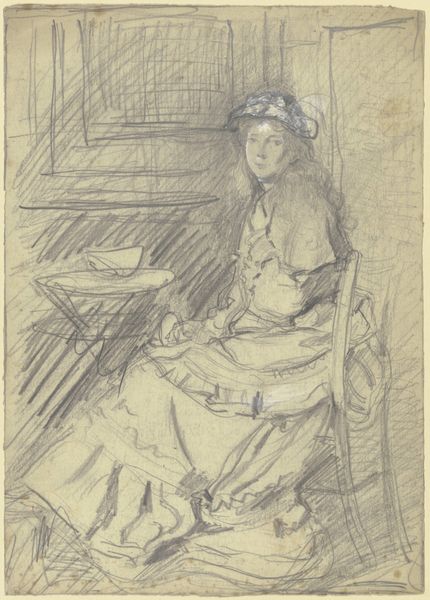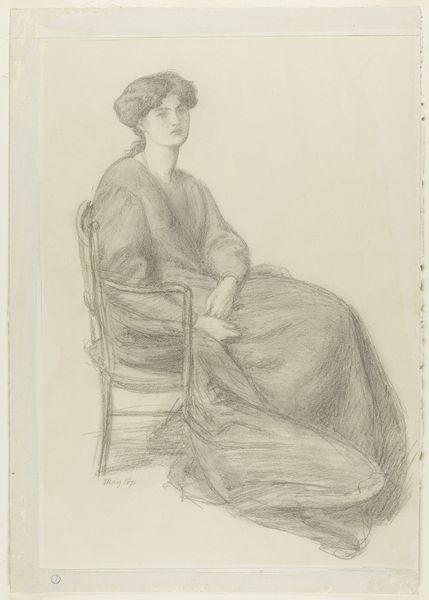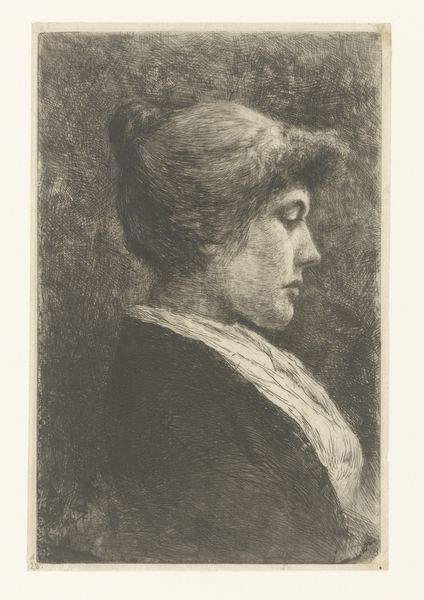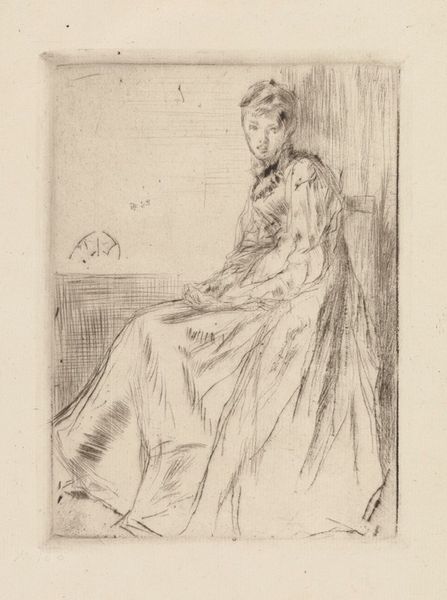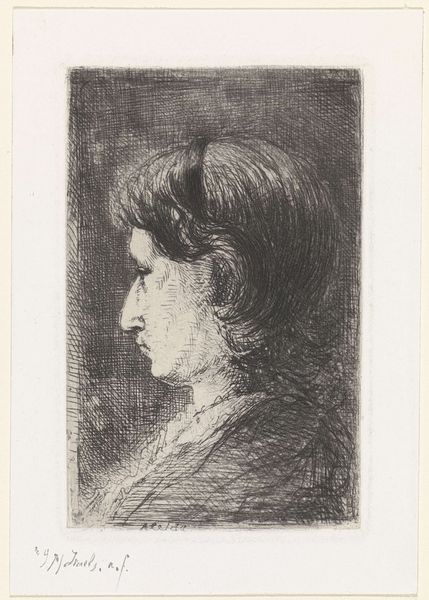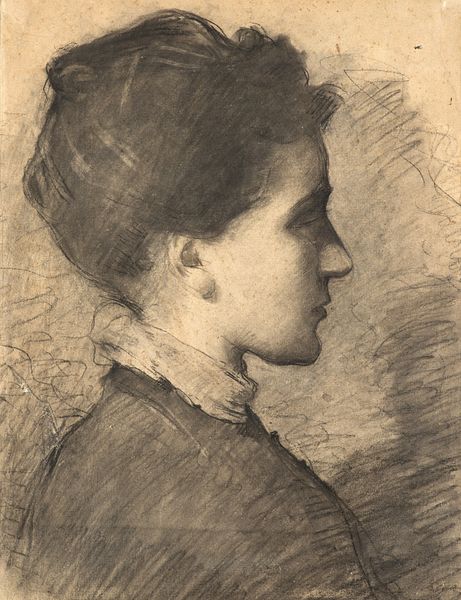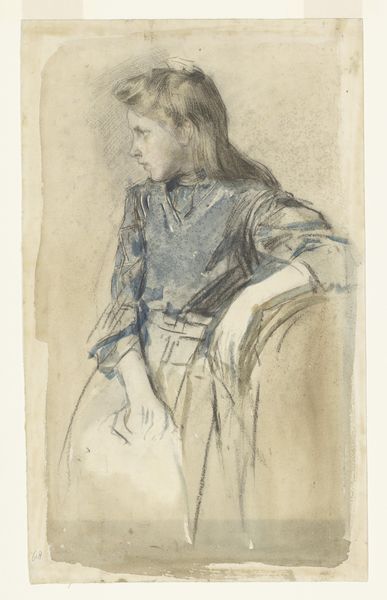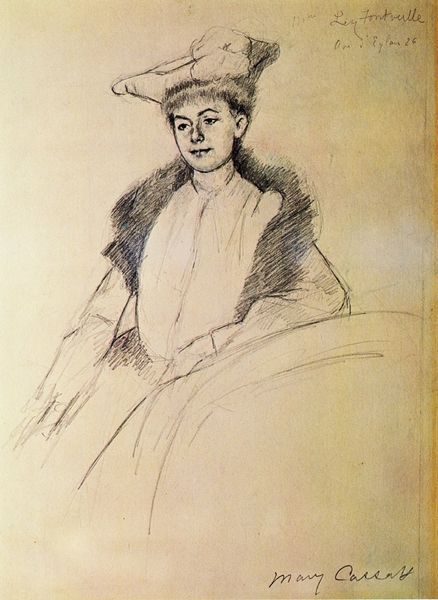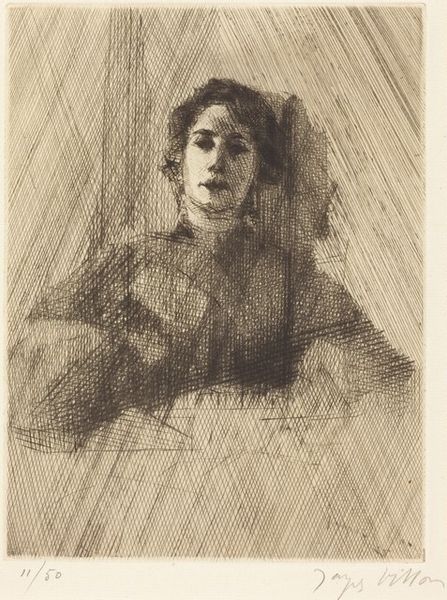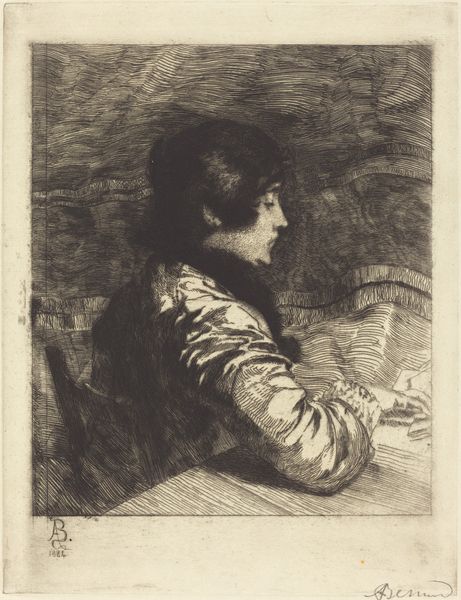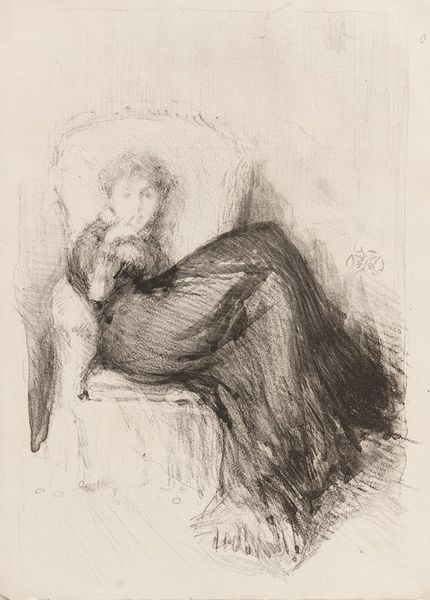
drawing, dry-media, chalk, charcoal, pastel
#
portrait
#
pencil drawn
#
drawing
#
charcoal drawing
#
dry-media
#
pencil drawing
#
chalk
#
charcoal
#
pastel
#
academic-art
#
realism
Copyright: Public Domain
Editor: So, this is "Bildnis der Tante Mary Eysen" from 1899, made by Louis Eysen. It looks like it's primarily charcoal and chalk on paper. The sketchiness and use of dry media gives it a raw and personal feeling. How would you interpret it? Curator: Well, consider the materiality. We see charcoal and chalk – inexpensive, easily accessible materials. Eysen chose to depict his Aunt Mary, someone within his immediate social sphere. The method is one of direct representation, eschewing idealized or heroic depictions in favor of recording his relationship to labor, which can challenge the high art world as the image itself comes secondary to the means used to record. Why choose these accessible materials? Editor: I guess it makes the process and labor more visible. Maybe that choice is deliberate in a way. Curator: Exactly! And what social standing did portraiture occupy in 1899? Wealthy patrons often commissioned portraits, solidifying class distinctions. But here, we see a more democratic approach using readily available materials, focusing on a familiar face. It's intimate rather than ostentatious, and perhaps even critical of these power dynamics within art itself. How might this democratisation affect traditional hierarchies in art production and consumption? Editor: It's interesting to think about this piece as less about elevating the subject, and more about the means of creation and the labor itself being worthy. I hadn't thought of it like that at first. Curator: Thinking about art through materials and production opens new interpretations. Next time you are viewing artwork ask: where did the materials come from and how are they used by the maker to alter or perpetuate systems? Editor: Thanks. That perspective gives the piece new depth, reflecting on materials and context alongside skill. Curator: My pleasure, analyzing labor helps one interpret almost all artworks.
Comments
No comments
Be the first to comment and join the conversation on the ultimate creative platform.

